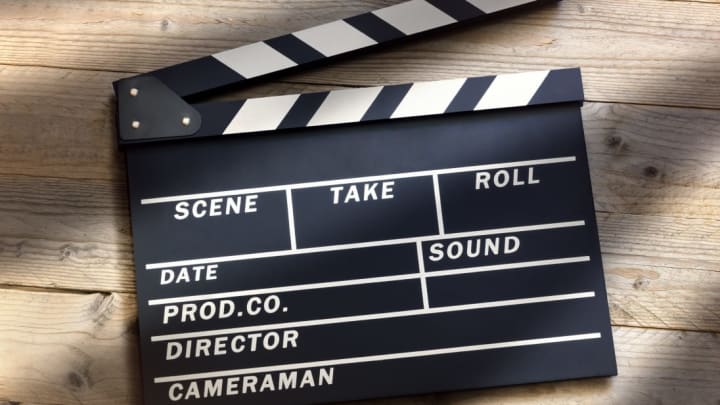Back in the stone age, you might remember, we had to record the events of our lives on video camcorders instead of our phones. These camcorders were great for amateur home use because they were pretty easy to use. Just point at something, hit a button and the audio and the video were recorded together in one place.
This is different than how things are done in Hollywood, where the images and sounds for movies are recorded separately. The images are captured on film by cameras, and the audio gets recorded on a separate analog or digital audio recorder (if a scene or set is particularly noisy, some productions might even have actors re-record their dialogue in a studio, in a process known as Automated Dialogue Replacement/Additional Dialogue Recording, or ADR).
The two parts have to be put back together in editing and carefully matched. To do that, it helps to have a way to synchronize the image and the sound. This where that clicky board thing comes in.
Called a clapperboard or a slate board, among other things, it’s used to make syncing audio and film easier and to identify takes and scenes. The clap or click of the board is easy for editors to pick out on the audio track and match to the visual of the clapper clapping on the film, syncing the moving picture with the sound.
The boards used to be made of actual pieces of slate, and later whiteboard, with the scene information written on them in chalk or marker. The relevant information includes the scene and take numbers, the camera angle, the date, the production title and the name of the director. The diagonal black and white lines usually seen on the hinged part that’s clapped down are there to ensure visibility.
Today, many larger productions have switched over to “digislates” or “smart slates.” These clapperboards display, in LED, a timecode generated by the audio recorder. The two are synced, and the board just has to be shown to the camera before a scene for the editors to find the same point in the film and audio tracks, no clap needed.
But on the plus side, if you need gift ideas for film buffs in your life, this type of board could be a good option to consider.
This article was originally published in 2012 and has been updated.
